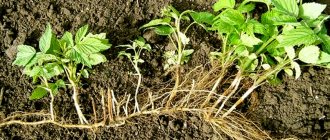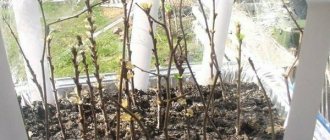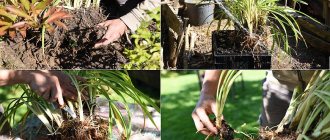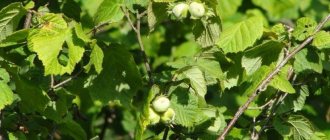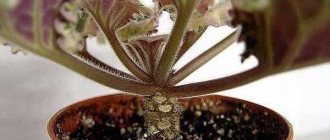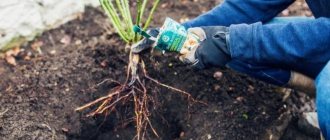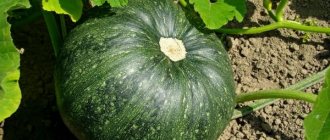Blueberry propagation is possible by generative and vegetative methods. Generative or seed propagation is a complex method used by professional breeders to obtain new varieties. To propagate blueberries at home, a vegetative method is used using various parts of the plant.
How do garden blueberries reproduce?
Propagation of garden blueberries is similar to other berry bushes. But compared to other crops, blueberries take root more difficult. Also, varieties of garden blueberries differ in their ability to shoot shoots, so the amount of planting material from different bushes may differ. During vegetative propagation by layering, cuttings and dividing the bush, all varietal characteristics of the mother plant are preserved.
Is it possible to propagate blueberries?
Garden blueberries are low in calories (39 kcal) and contain a rich set of vitamins and minerals. Removes radiation, relieves fever, improves blood composition. In the off-season, the fruits support the body's immune defense. Thanks to its beneficial properties, the culture is becoming increasingly popular.
Amateur gardeners are interested in whether it is possible to grow blueberries themselves, without purchasing plants from specialized nurseries or through intermediaries. If you follow the rules and recommendations, the task is quite doable. The berry crop reproduces in the same way as other fruit bushes.
How to cut blueberries and at what time
To propagate garden blueberries from woody cuttings, planting material is harvested in early spring or late winter, in regions with a warmer climate. Cuttings are often combined with general pruning of shrubs. The main rule when collecting lignified cuttings is that the mother plant is in a dormant period. To obtain planting material, annual shoots that have matured well are cut off.
A video about the propagation of garden blueberries by green cuttings shows that planting material is collected in mid-summer. Harvesting time is limited to several weeks during the plant's dormant period. Depending on the growing region and weather conditions of the current season, the collection of green cuttings begins at the end of June. At this time, the first wave of shoot growth is completed, and the next one has not yet begun.
Planting material in the case of green blueberry cuttings is collected from the current year's growth shoots or branching shoots.
How to propagate blueberries from woody cuttings
Chopped woody shoots are tied in bunches. Before planting, they must be stored in a refrigerator or a specially constructed glacier, where the cuttings are left in an alternating layer of snow and sawdust. The temperature during storage should be about +5°C. During this period, the cuttings must be periodically inspected to prevent them from drying out or developing mold.
To propagate blueberries from cuttings at home, prepare a place in the greenhouse in advance. An acidic substrate is poured into a separate box. The planting mixture is prepared from 3 parts of high-moor peat and 1 part of river sand. When planting directly in a greenhouse bed, the soil is removed from it to a depth of 20 cm and replaced with something suitable for growing heather crops.
Depending on the equipment of the greenhouse, cuttings are planted in the spring a month after storing them in the refrigerator. In the video about the propagation of blueberries by cuttings, you can see that the prepared shoots are shortened to 10-15 cm for tall varieties of blueberries and to 7-10 cm for low-growing varieties. The lower cut is made obliquely under the bud, the upper cut is made even, 1.5-2 cm above kidney.
Depending on the expected time spent in the greenhouse, the cuttings are planted on the bed more densely or sparsely according to a 5 by 5 cm or 10 by 10 cm pattern. The cuttings are stuck vertically into the soil mixture and watered. To create the necessary microclimate, arcs are installed above the bed and the planting is covered first with plastic film, then with any non-woven material. In the greenhouse it is necessary to maintain a high air temperature in the range of +26... +28°C and constant humidity. Watering is carried out by sprinkling.
When blueberries are propagated using woody cuttings, rooting takes about 2 months. During this time, plants require constant care. The greenhouse is regularly ventilated, maintaining a constant temperature of the air and soil without sudden changes. The seedlings are watered and treated for diseases.
After the cuttings take root, the cover is removed. Before planting in a permanent place, seedlings are grown for several years. With good care, results from blueberry propagation by cuttings can be obtained in 2 years.
Propagation of blueberries by green cuttings
With the method of green cuttings of garden blueberries, planting material is harvested early in the morning to prevent dehydration of the stem. The side shoot is pinched at the base with the thumb and forefinger and cut off with a sharp downward movement so that the shoot remains with a “heel” - part of the bark from the main branch. A strip of wood that is too long is cut with a disinfected sharp knife or pruning shears. The length of the cutting should be about 10 cm. The lower leaves are torn off, leaving only a few upper ones, which are shortened to half.
To grow green cuttings, mix equal parts of high-moor peat and rotted pine litter. Planting material is placed in a prepared substrate in a greenhouse. The cuttings are placed in a common planting container or cassettes so that the leaves do not touch each other. When caring for plantings, it is important to maintain high air and soil temperatures. When propagating blueberries from green cuttings, their leaves should always remain moist; for this, frequent spraying is carried out or a fogging system is installed.
Advice! For watering blueberry seedlings, do not use chlorinated water.
If blueberries are propagated by green cuttings in a greenhouse, additional shelter is not required in the summer. With proper care, cuttings will take root in 4-6 weeks. In autumn, young plants are covered or transferred to a cool room. In the spring of the next season, the sprouts are transplanted into larger containers for further cultivation.
The survival rate when propagating blueberries from green cuttings is slightly lower than from lignified ones. But harvesting green cuttings is easier and does not require storage space in the winter. Lignified cuttings are collected from formation shoots, which are fewer on the bush than branching shoots, from which planting material for green cuttings is taken.
The cutting method is one of the only possible ways to propagate tall blueberry varieties.
How to root a blueberry cutting
Blueberries take a long time to take root, so before planting the cuttings, the lower cut is dipped in a special powder that stimulates the formation of roots. For heather crops, which include blueberries, root growth accelerators based on indolylbutyric acid are also used. If all growing conditions are met, the average survival rate of sprouts when cutting blueberries is about 50-60%.
Reproduction by cuttings
Methods for harvesting and rooting green and lignified cuttings have differences and similarities. Regardless of the planting material, the gardener must carry out the procedure with minimal disruption to the biological characteristics of the plant.
Preparation of green cuttings
With this method of reproduction, compliance with the optimal timing is of particular importance. This is the period from June 20 to July 10.
Cuttings from insufficiently matured shoots often suffer from drying out and are affected by diseases and fungal spores. The leaves of such cuttings are not sufficiently developed and cannot supply the stem with nutrients in sufficient quantities. When harvesting cuttings later, nutrients enter the growth points, which leads to their loss and affects the formation of roots.
Green blueberry cuttings
Shoots ready for cuttings have springy, unbreakable stems and dark green leaves. For cutting cuttings, choose strong shoots of the first and higher orders of branching with a height of 6-12 cm. They are broken off by hand with part of the wood and bark of last year's growth (heel).
Preparation of the cutting:
- processing the lower part of the cutting (removing exfoliated bark);
- removal of 2-3 lower leaves (1/3 of the length);
- trimming the remaining leaves by 1/3;
- treatment of cuttings with growth stimulants
The cuttings are planted on a prepared ridge in greenhouse conditions.
Preparation of lignified cuttings
To prepare cuttings, select last year's formation or replacement shoots that are fully mature and undamaged by frost with a diameter of 0.5-1.2 cm. Cuttings with a larger diameter take root poorly, and smaller ones are produced by weak plants. Shoots with a large number of flower buds are not suitable for propagation; removing them also does not give positive results.
Branches cut in winter are stored in boxes filled with peat or sawdust and holes for aeration. The boxes are placed in a dark, well-ventilated room at an air temperature of 0°C - +5°C. At the end of March or April, cuttings are cut. The lower parts of the branches have the best root-forming ability.
The easiest way to propagate blueberries is from woody cuttings.
The cuttings are cut with sharp pruning shears, avoiding pushing and damaging the bark.
Cutting steps:
- cutting length 10-12 cm;
- the lower cut is made under the bud with a slight slope;
- the upper cut is 0.5 cm-1 cm above the bud;
- the cuttings are treated with growth stimulants.
Rooting cuttings, planting and care
Green and lignified blueberry cuttings are rooted in ridges or boxes, creating greenhouse conditions for them. The rooting site can be of any convenient size, but with a height of at least 15-20 cm. The ridge is placed on a layer of drained soil, expanded clay or coarse sand. You can choose a greenhouse as a room or install removable frames with glass (polyethylene) over the ridge.
The most optimal substrate for the development of cuttings is a mixture of high-moor peat with river sand (1: 1). One day before planting the cuttings, the substrate is sifted and spilled with warm water. The prepared ridge is covered with plastic film to completely saturate the peat with water.
Planting blueberry cuttings in containers
Lignified cuttings are planted according to a 5x3 pattern, and green cuttings according to a 5x5 pattern, leaving 1-2 buds on the surface of the substrate. The entire rooting period maintains a temperature of +20°C-+25°C and light substrate humidity.
The roots of the cuttings begin to form after 4 weeks. During this period, the plants begin to gradually become accustomed to drier air, periodically removing the film and glass. 2-3 months after planting, glass or film covers are completely removed and fed with ammonium sulfate (10 g/m2).
Young plants are left to overwinter at the rooting site. To do this, they are mulched with a 5 cm layer of peat, sawdust or fallen leaves. In the spring, after the soil has warmed up, they are transplanted to a permanent place.
How to propagate blueberries by dividing the bush
Blueberry seedlings can be propagated by dividing an adult bush. When dividing a bush, the mother plant is completely dug up. When propagated from one adult shrub, several independent plants are obtained.
Important! The bush is not divided during flowering.
The blueberry root system is superficial, so digging up the bush is not difficult. After removing the bush from the soil, shake off the soil and inspect the roots. Only a completely healthy plant is suitable for replanting. Damaged or dry roots are cut off. The bush is divided manually in such a way that each independent part - division - contains a well-developed root, more than 5 cm long. From an adult bush, 3-4 divisions are usually obtained. After separation, the roots are sprayed with disinfectants, as well as root formation stimulants.
When propagating by dividing a bush, it is important to prepare a place for transplanting new plants in advance. When planting, the roots are straightened so that they are evenly distributed in different directions, otherwise the plant will not take root.
When can rooted seedlings be replanted?
You can plant gooseberries in the fall with cuttings only after they have taken root well, namely, they form several roots 10-15 cm long. The above-ground part should have 1-3 shoots with 4-6 strong buds.
Autumn planting occurs in September and October, depending on weather conditions. Gooseberry seedlings are planted in prepared holes, at the bottom of which a fertile layer of a mixture of soil, compost and superphosphate is laid. When planting, the root collar is buried 3-5 cm. The planted gooseberries are watered and mulched abundantly. In winter, a layer of snow is shoveled onto the bushes. In winters with little snow, they are covered with spruce branches or agrofibre.
The author of the video will tell you how you can quickly propagate gooseberries using cuttings in the fall.
Propagation of garden blueberries by layering
Blueberry propagation by layering is characterized by a long waiting time and low yield of planting material. But this method of propagation does not require special conditions for keeping the seedling; the plant grows strong and hardy.
For propagation by layering, without separating the side shoot of the mother plant, bend it to the soil and cover it with an acidic substrate for growing blueberries or sawdust from coniferous trees. During cultivation, shoots directed upwards grow from the place where the buds are located. They are cared for in the same way as an adult bush, maintaining soil moisture and acidity.
Important! When propagating blueberries by layering, you should not focus on the development of the vegetative mass, because the roots at this time may still be poorly formed.
Rooting during propagation by layering occurs after 2-3 years. After the formation of their own roots, new plants are carefully dug up, cut off from the mother shoot with a sharp garden tool and immediately transplanted for further cultivation in a separate place. If the location is not determined, blueberries can be grown in a container with a suitable substrate.
Propagation of garden blueberries by radical pruning
A method in which the bush is completely replaced with several new plants. In spring, cut off all shoots. Complex mineral fertilizer is applied under the remaining root in double dosage. Sawdust from coniferous trees is poured on top. The sawdust layer should be about 30 cm.
A small greenhouse is installed above the growing site to maintain the necessary humidity and growing temperature, as well as to protect young plants from sudden cold snaps. New shoots will soon appear in place of the cut shoots. But the development of its own roots will occur within two years. They are formed above the original root system, in a layer of sawdust.
After 2 years, young shoots with their own root system are separated from the mother bush and planted separately. With the method of pruning the bush and growing new replacement shoots, the bush is grown for several more years to obtain the first berries.


